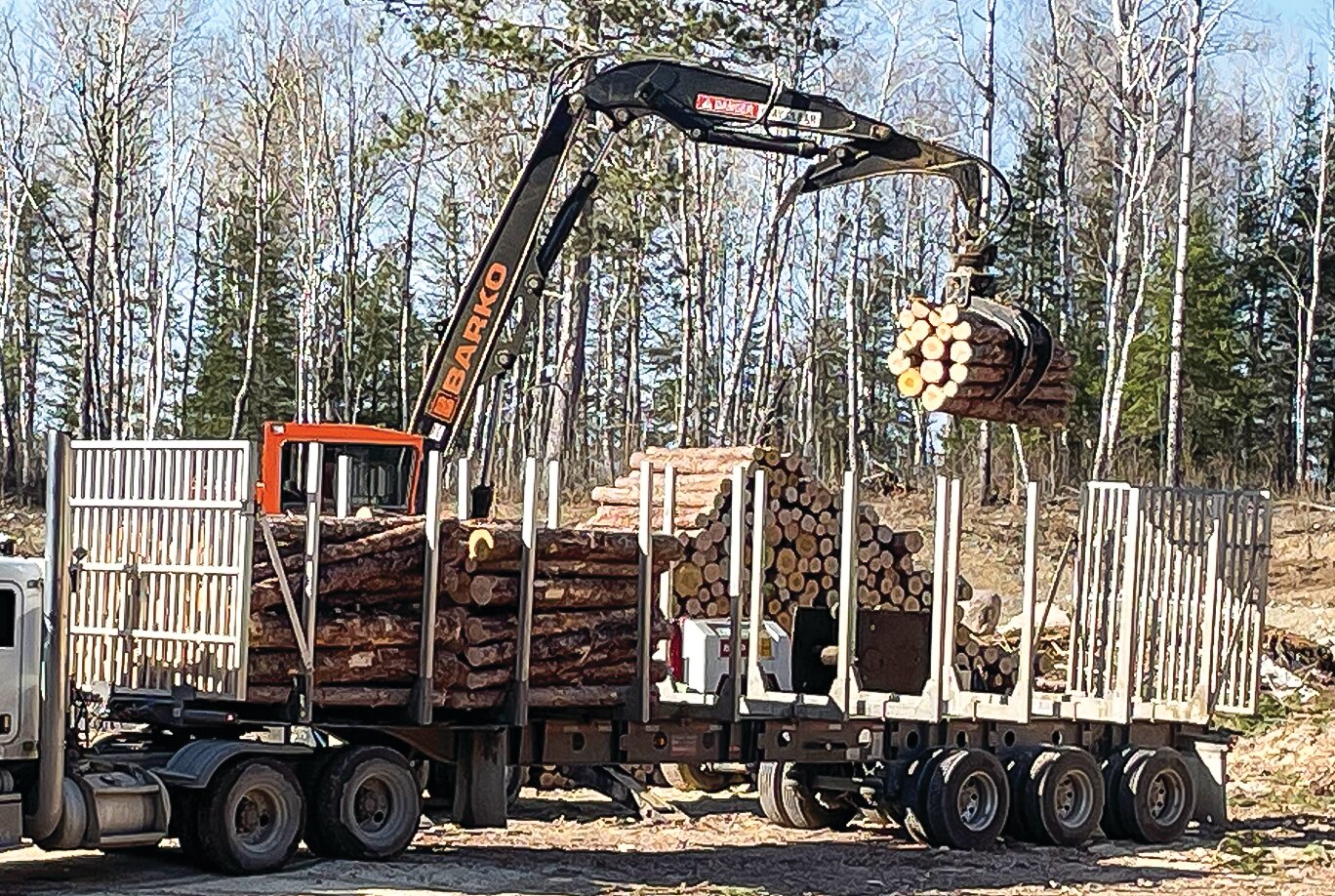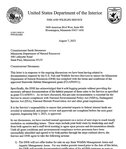Support the Timberjay by making a donation.
FWS suspends payments to DNR
Feds seeking advanced documentation of proper use of habitat dollars
REGIONAL— The U.S. Fish and Wildlife Service is withholding millions of dollars in federal habitat funds from the Minnesota Department of Natural Resources over the state agency’s …
This item is available in full to subscribers.
Attention subscribers
To continue reading, you will need to either log in to your subscriber account, below, or purchase a new subscription.
Please log in to continue |
FWS suspends payments to DNR
Feds seeking advanced documentation of proper use of habitat dollars
REGIONAL— The U.S. Fish and Wildlife Service is withholding millions of dollars in federal habitat funds from the Minnesota Department of Natural Resources over the state agency’s apparent inability to show in advance that the funds are being used for the intended purposes.
According to an Aug. 7, 2023, letter from FWS Acting Regional Director Charles Traxler, the DNR has acknowledged that it sold logging permits on state Wildlife Management Areas, or WMAs, without documenting the habitat value of the sales before the permits were issued. The letter was obtained this past week by Public Employees for Environmental Responsibility, or PEER, and was released to news media, including the Timberjay. The Timberjay has confirmed that approximately $21.62 million in federal funding is currently on hold.
The DNR is allowed to sell timber for commercial purposes, but it can’t utilize federal dollars dedicated to habitat improvement to pay for work associated with those sales without documenting ahead of time how the sale actually improves the conditions for wildlife.
It’s been an area of disagreement between the FWS and the DNR for some time. According to PEER, the FWS held up $26.4 million in federal funding back in 2021 over the same issues. The federal funds, known as Pittman-Robertson and John Dingell grants, have typically provided $20-$30 million to the DNR annually.
The DNR had announced late last year that it had agreed to a list of action items that were intended to resolve the federal concerns, but the latest letter from FWS suggests that agreement has not led to the release of funds.
DNR officials say the issue centers around the FWS’s requirement that the agency document the wildlife value of timber management work prior to offering logging contracts on WMAs or Aquatic Management Areas (AMAs).
Previously, the DNR supplied this documentation to the FWS following sales on these lands,” stated Dave Olfelt, director of the DNR's Fish and Wildlife Division. “The FWS and DNR are now working to establish a clear process for timely provision and review of such documentation going forward.”
Olfelt denied that the DNR has used federal habitat grant funds improperly, as some environmental critics have suggested. “The issue we are resolving with the FWS does not pertain to how we have expended forest management grants, but rather to how we document the habitat management purposes of logging occurring on lands that are managed using those grant funds.” Olfelt said the grant requirements were changed in the contract that took effect in July 2021, which now requires advanced documentation.
“Under previous grants, the DNR provided general information about the habitat purposes of proposed management to the FWS as part of the grant application, and then provided descriptions and quantities of habitat outcomes in accomplishment reporting under the agreement,” he said.
According to Olfelt, the DNR had agreed not to charge habitat management costs to the habitat grant beginning in 2021 as the two agencies developed a system to document the value of such projects in advance. “Our error was that we mistakenly believed that we could continue offering new timber sales during that period, so long as those sales had clear habitat management purposes,” he said.
The DNR uses the grant funds to help pay for staff time, mileage, and contracts that benefit wildlife and wildlife habitat. “Logging is one tool that DNR uses to create disturbances on forested lands that benefit some species of wildlife,” said Olfelt.
Longstanding concerns
The DNR has faced criticism since 2019 when the DNR announced it was ramping up its timber quotas on commercial forest land as well as on WMAs and AMAs and was shortening its standard rotations on many timber stands. WMAs and AMAs are comprised of land purchased by the DNR using fees from the sale of hunting and fishing licenses and critical habitat vehicle license plates and are supposed to be managed primarily for fish and wildlife. The DNR has been able to tap federal dollars over the years to help manage those lands, but that source of funding is now on hold because of the dispute over the DNR’s failure to document the wildlife value of its timber cutting on wildlife lands.
Concern over the DNR’s actions hasn’t been limited to the FWS. In 2019, 28 DNR wildlife managers signed a letter to Commissioner Sarah Strommen officially objecting to the agency’s rush to cut on WMAs, arguing that it was eliminating valuable wildlife habitat. A long list of retired DNR wildlife officials, and even some retired foresters, joined that chorus, as did conservation and hunting and fishing organizations, arguing that timber quotas sought by the wood products industry have been taking precedence over wildlife habitat.
In the Aug. 7 letter, Traxler makes clear that the federal grant dollars, which should have become available July 1, won’t be released until the outstanding concerns are addressed. “It is the service’s responsibility to ensure that potential impacts to federal interest lands are avoided or minimized, and proper review and approvals are completed before the next grant segment, beginning July 1, 2023 is approved,” notes Traxler in his letter.
“We applaud this action by the Fish and Wildlife Service. U.S. taxpayers should not subsidize Minnesota’s backward and destructive logging practices,” declared PEER Executive Director Tim Whitehouse, a former senior U.S. Environmental Protection Agency enforcement attorney. “It is outrageous that the Department of Natural Resources was using habitat restoration funds that would degrade the very habitats they were supposed to enhance.”









